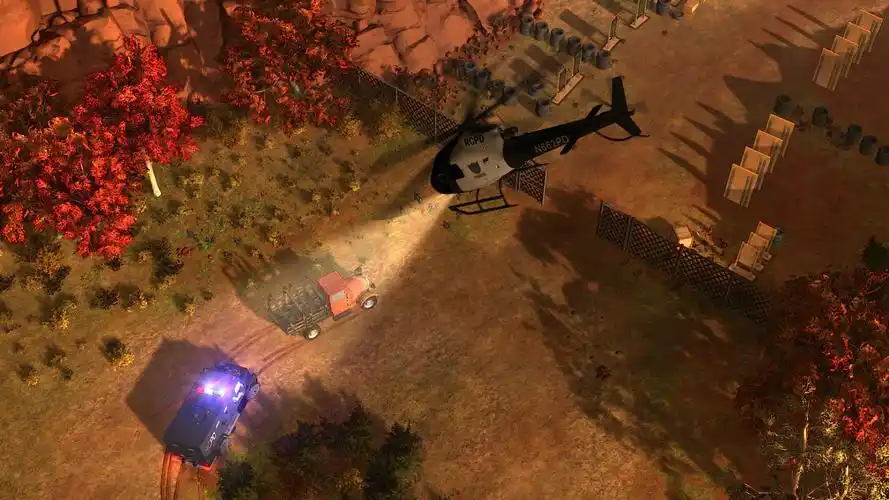Title: Love Pandemic Shelter Sign Installer Simulator VR: How the 'Place Missions' Update Redefines Virtual Empathy
The virtual reality landscape is often dominated by high-octane shooters, fantastical adventures, and pulse-pounding horror experiences. But nestled within the SteamVR and Meta Quest storefronts lies a title that is quietly, profoundly, challenging the very definition of what a video game can be: Love Pandemic Shelter Sign Installer Simulator VR. This unconventional sim, which tasks players with the solemn duty of placing informational signs in and around a temporary pandemic shelter, has carved out a unique niche. Its latest major update, simply titled "Place Missions," doesn't just add new content; it completes the game's vision, transforming it from a poignant tech demo into a fully realized masterpiece of interactive storytelling and empathetic engagement.
For the uninitiated, the core premise of Love Pandemic Shelter Sign Installer Simulator VR is deceptively simple. You are a volunteer during a global pandemic. Your tool is not a weapon or a magic spell, but a tablet loaded with work orders and a bag full of signs. These aren't just any signs; they are waypoints of compassion in a sea of uncertainty. "Testing This Way," "Quiet Zone," "Sanitization Station," "Vaccinated Area," "Remember: You Are Not Alone." Your job is to navigate the sprawling, repurposed convention center that serves as a shelter, finding the exact prescribed spots to install these vital markers. The genius of the base game lies in its mundane yet deeply human atmosphere. You overhear snippets of conversation between overworked nurses, see families huddled together, observe individuals staring into the middle distance with a thousand-yard stare. The VR immersion is key—you are there, your physical presence required to kneel, reach, and carefully place each sign. It’s a meditation on duty, order, and the small acts that hold a community together during crisis.
The "Place Missions" update builds upon this foundation with a new layer of narrative depth and mechanical nuance. Previously, missions were generated from a central job board, offering a somewhat random assortment of sign placements. The new update introduces structured, multi-stage "Place Missions" that are narrative-driven chains of tasks. You are no longer just a faceless installer; you become a problem-solver, a quiet hero responding to specific, emergent needs within the shelter.
One mission, titled "The Lost and Found," begins with a request from a distraught mother. Her young daughter has misplaced a beloved stuffed toy somewhere in the sprawling facility. Your first task isn't to place a sign, but to investigate. Using your tablet, you access security footage (a new interactive element), tracing the child's path through the crowded hallways. You pinpoint the last location the toy was seen—a quiet corner near the makeshift cafeteria. Your solution? You place a temporary, hand-written "Lost Toy Rabbit - Please Return to Info Desk" sign exactly where you think it will be most seen, creating a waypoint for kindness. The mission concludes hours later (in-game time) when you return to the information desk to see the child reunited with her toy, a small but impactful victory you facilitated.
Another mission, "The Community Board," highlights the update's focus on fostering micro-communities. The shelter's manager notes that residents feel isolated and disconnected. Your objective is to create a central hub for communication. This mission involves a series of precise placements: first, a large "Community Board" header, then sub-sections for "Job Postings," "Messages for Loved Ones," "Skill Sharing," and "Support Groups." Each sign you mount is a building block for social cohesion. As you progress through the mission chain, you return to the board to see it slowly fill up with handwritten notes—a resident offering to mend clothes, another searching for a family member, a group organizing a daily walking club. Your work literally creates a platform for human connection, making the digital space feel alive and dynamic.

The update also introduces more challenging logistical missions. "Flow Optimization" requires you to analyze foot traffic patterns at peak times (like meal distribution) and install a series of directional arrows and "Please Keep Moving" signs to prevent dangerous bottlenecks and reduce stress for both residents and staff. This requires careful observation and planning, turning the player into a low-level urban planner for this temporary city.
Technically, the "Place Missions" update is seamless. New voice-acted dialogue from the shelter staff and residents provides context and emotional weight. The game's already stellar sound design is enhanced with more contextual audio, making the environment feel even more reactive. The physics of placing signs—the satisfying click of the mount, the weight of the hammer—remain perfectly executed, grounding every action in tangible reality.
Ultimately, the "Place Missions" update is a triumph of design philosophy. It understands that true immersion isn't just about visual fidelity; it's about contextual purpose. By giving your actions a direct, observable impact on the well-being of the shelter's inhabitants, the game fosters a powerful sense of empathetic responsibility. You aren't playing for a high score or a loot drop; you are playing to soothe, to organize, to connect. Love Pandemic Shelter Sign Installer Simulator VR was always a unique experiment. With the "Place Missions" update, it solidifies its status as an essential VR experience—a quiet, profound, and beautifully human game that demonstrates the power of the medium to explore not just conflict and escape, but compassion and community.
Tags: #VRGaming #SimulatorGames #GamingForGood #EmpathyInGaming #IndieGames #VirtualReality #PandemicGame #LovePandemicShelter #GameReview #PlaceMissionsUpdate #NarrativeGaming #SeriousGames #MetaQuest #SteamVR


















